Common Sharks Seen While Diving in Florida
Aaah, the most misunderstood fish in the ocean: sharks! Due to dwindling numbers, you’ll be lucky to catch a glimpse of one. If you do, best be prepared to know what it is! These are the most common sharks seen while diving in Florida!
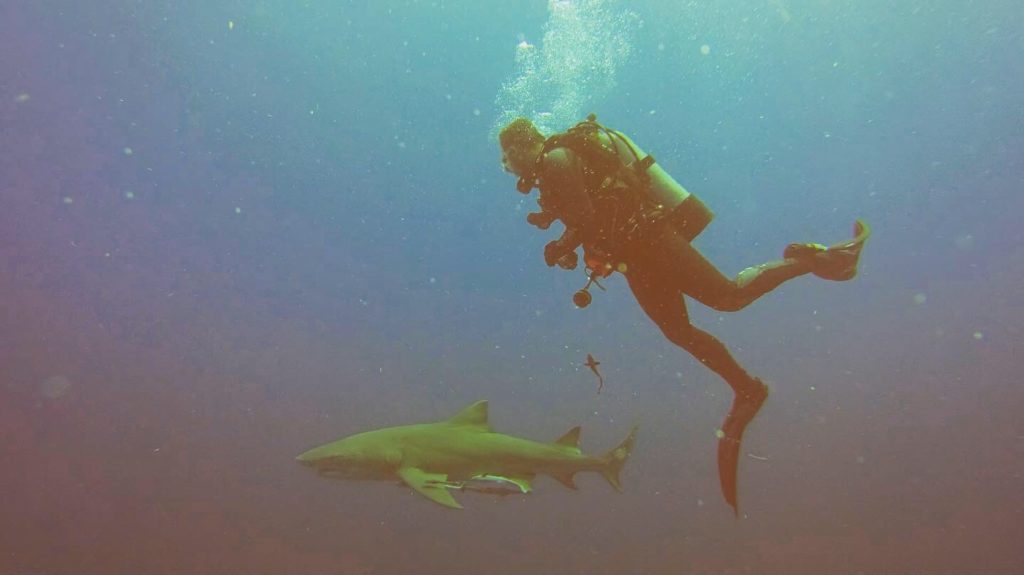
Why are sharks commonly seen in Florida?
Other than the obvious fact that it’s surrounded by the ocean, Florida actually has a few things going for it in terms of shark viewing:
- The Florida Reef Tract. This 360 linear mile reef system runs from Dry Tortugas National Park west of Key West, all the way to St Lucie Inlet in Martin County. This reef system is the third longest barrier reef in the world after The Great Barrier Reef in Australia and the Mesoamerican Barrier Reef in Central America and Mexico.
- Proximity to the Gulf Stream. This major ocean current brings warm water from the Gulf of Mexico all the way to Europe, passing closely by South Florida and the Florida Keys. An abundance of marine life, including sharks, migrate in this current for reproduction and feeding.
The combination of the two make Florida one of the world’s premier locations for shark sightings while scuba diving!
Meet the Sharks in Florida:
Nurse Shark
When eating prey in the sand, this shark makes a sucking sound which resembles a nursing baby. Nurse sharks are relatively unconcerned when confronted with a diver.
Size: 5 – 9 feet, max 14 feet
Distinctive Features:
The two ‘whiskers’ on their face are actually called barbels. These serve as sensory organs when searching for prey.
Habitat and Behavior:
Found on most shallow reefs lying in the sand under ledges.
These sharks do not need to continuously move to breath unlike most sharks.
Dive Sites for Possible Sightings:
Any shallow reef (20 – 30 feet) from Palm Beach to Key West!
Silky Shark
This long, slender, and silky skinned shark likes to stay offshore and rarely will see water less than 100 feet. When encountered, this shark is likely wary of divers but may make a pass or two to check you out.
Size: 5 – 7 feet, max 10 feet
Distinctive Features:
The short and rounded dorsal fin is a dead give away when identifying this shark.
Habitat and Behavior:
Stays in the open water, traveling long distances in the open ocean currents. A great hunter.
Dive Sites for Possible Sightings:
Sharks dives like in Jupiter!
Blacktip Shark
Often found cruising major coral reef systems, this near threatened species is one of the most often sighted sharks in Florida.
Size: 5 – 7 feet, max 8.5 feet
Distinctive Features:
You can’t miss the black tips on their dorsal, pectoral, and ventral fins.
Habitat and Behavior:
Cruise reefs shallower than 100 feet and are typically wary of SCUBA divers.
Dive Sites for Possible Sightings:
Any shallow reef under 100 feet. Particularly the major reef systems such as Molasses Reef (Key Largo), Hammerhead Reef (Fort Lauderdale), or Alligator Reef (Islamorada).
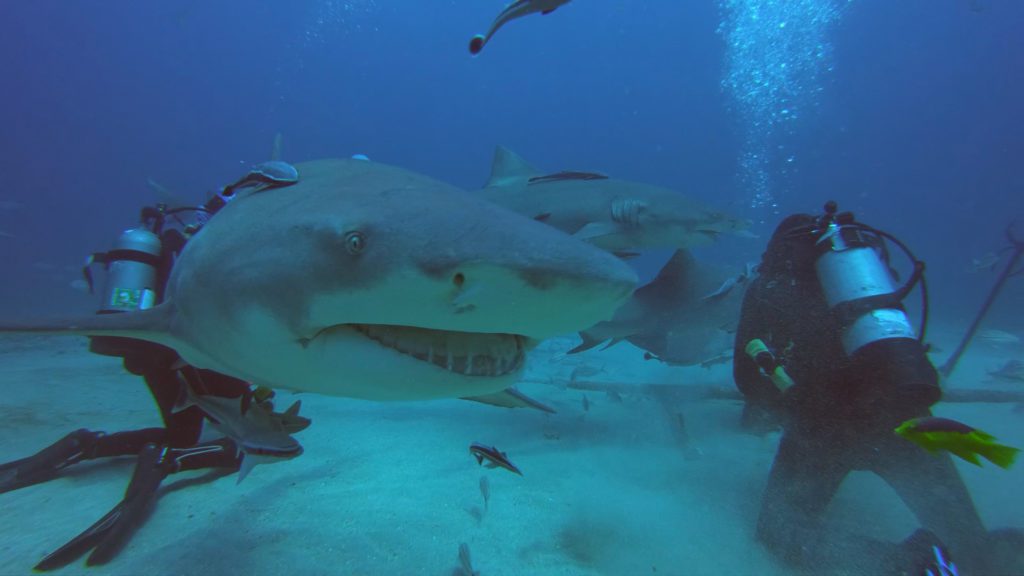
Lemon Shark
These social sharks are not too concerned with humans in their water. They may make a few close passes as you explore a surrounding reef!
Size: 5 – 8 feet, max 11 feet
Distinctive Features:
Their yellowish/brown skin color in addition to their rounded snout.
Habitat and Behavior:
Often school in Florida in the winter, particularly near the Gulf Stream. However, typically cruise inshore waters and can be found resting on the bottom.
Dive Sites for Possible Sightings:
In reality, most dive sites. But the abundance of them during our shark dive in Jupiter is a can’t miss!
Great Hammerhead Shark
The Great Hammerhead Shark is what I like to call one of those “mythical ocean creatures”. The sheer existence of a shark that has a head shaped like a hammer is mind blowing! Unfortunately for us, these sharks often move away from divers when encountered.
Size: 5 – 14 feet, max 20 feet
Distinctive Features:
It’s right in the name! You can’t miss the hammer shaped head on this guy!
Habitat and Behavior:
Typically stays offshore. May travel along the Gulf Stream but has been known to make an appearance on local reefs.
Dive Sites for Possible Sightings:
This is a roll of the dice. I saw a glimpse of one during our shark dive in Jupiter. Hopefully you can be just as lucky!
Bonnethead Shark
Not to be mistaken with a hammerhead shark, this shark would best be characterized as a “shovel head”. They probably won’t get close to you so be on the look out for them off in the distance on a clear day.
Size: 3 – 4 feet, max 5 feet.
Distinctive Features:
Much smaller and a rounded face compared to hammerhead sharks. Their head literally looks like a shovel.
Habitat and Behavior:
Typically seen in shallow waters near coral reef and seagrasses as they feed on crabs.
Wary of divers.
Dive Sites for Possible Sightings:
The only sites I’ve seen Bonnethead Sharks are down in the Florida Keys at a site near “The Secret Gardens”. Key Dives in Islamorada is one of the few shops that go here.
Bull Shark
This beast of a shark is hard to miss with their short snout and small eyes. The big bodied shark has a much larger upper lobe of its tail compared to the lower lobe.
Size: 6 – 9 feet, max 12 feet
Distinctive Features:
The big body, large upper tail, and the lack of markings on their fins.
Habitat and Behavior:
Typically offshore but may swim up to coral reefs. Bull sharks can even be found in freshwater rivers miles upstream from the ocean!
Dive Sites for Possible Sightings:
In Florida, deeper shipwrecks in the current are usually a good bet. The Duane, Spiegel Grove, and Vandenberg Wrecks in the Florida Keys or a shark dive in Jupiter.
Sandbar Shark
A migratory shark that can be found as deep as 800 feet! If you’re lucky, during the summer young sandbar sharks can be found in shallower waters.
Size: 5 – 7 feet, max 8 feet
Distinctive Features:
The ridge on its back between dorsal fins, large tail, and pointed fins are a dead giveaway for this shark.
Habitat and Behavior:
Wary of divers as they usually stick to deeper waters. These sharks are even found 800 feet below the surface!
However, during the summer young sharks may be found in shallower, estuary waters.
Dive Sites for Possible Sightings:
Again, your best bet may be in Jupiter!
Tiger Shark
It isn’t called a Tiger Shark for no reason! Look at those stripes! So cool!
Size: 7 – 12 feet, max 24 feet
Distinctive Features:
This bluish/brownish shark has stripes like a tiger, hence the name!
Habitat and Behavior:
Tiger sharks are quite the predator as they roam deeper waters in major ocean currents.
If I were a fish, I would not want to encounter one!
Dive Sites for Possible Sightings:
If I must be honest, I’ve yet to see a Tiger Shark in Florida. Word on the water, however, is Jupiter is your best bet.
Source Information and Shark Resources:
The information from this page was sourced from our very own Marine Scientist, Laura, and the book “Reef Fish Identification – Florida, Caribbean, Bahamas – 4th Edition” by Paul Humann and Ned Deloach.
For more information on sharks, fish, coral, and reef creatures, we HIGHLY recommend their entire series of books for your library:
In addition, some handy resources for shark-centric underwater identification are:
Enjoy this Post? Pin it!
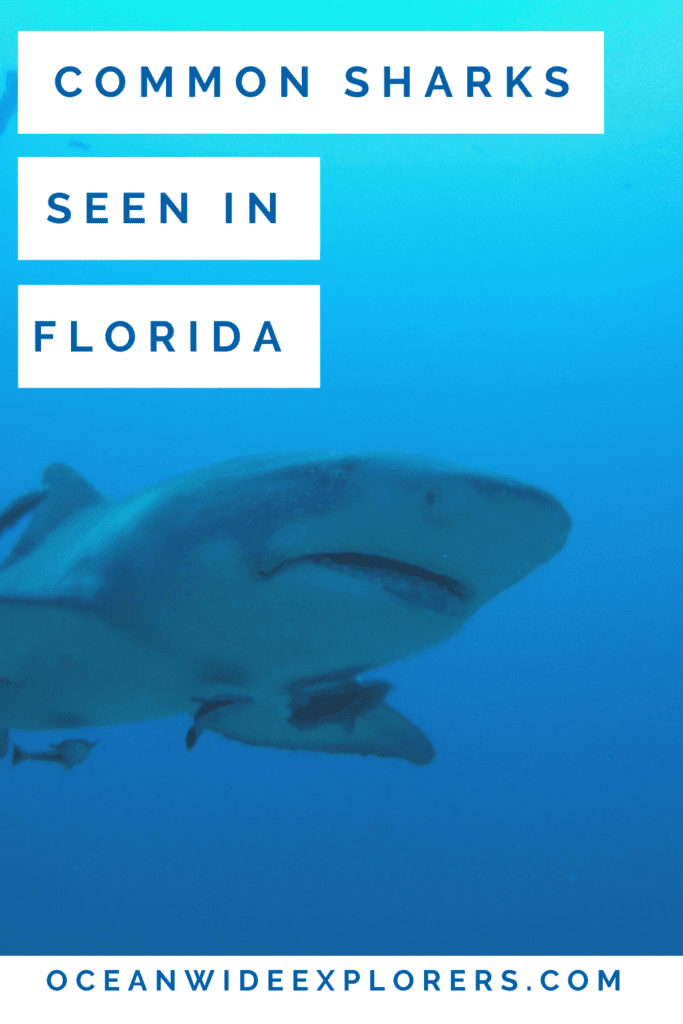
Read More About Marine Life in Florida
We hope you enjoyed our post on sharks seen in Florida. Hopefully you’ll find it useful on your next adventure! Here are a few more ocean-loving articles we think you should read next:
- 11 Coolest Ocean Animals in Florida
- Meet the Sea Turtles of Florida
- 18 Facts You Should Know About Lionfish
Share your pictures, stories, or encounters with the ocean’s apex predator! Leave a comment below!

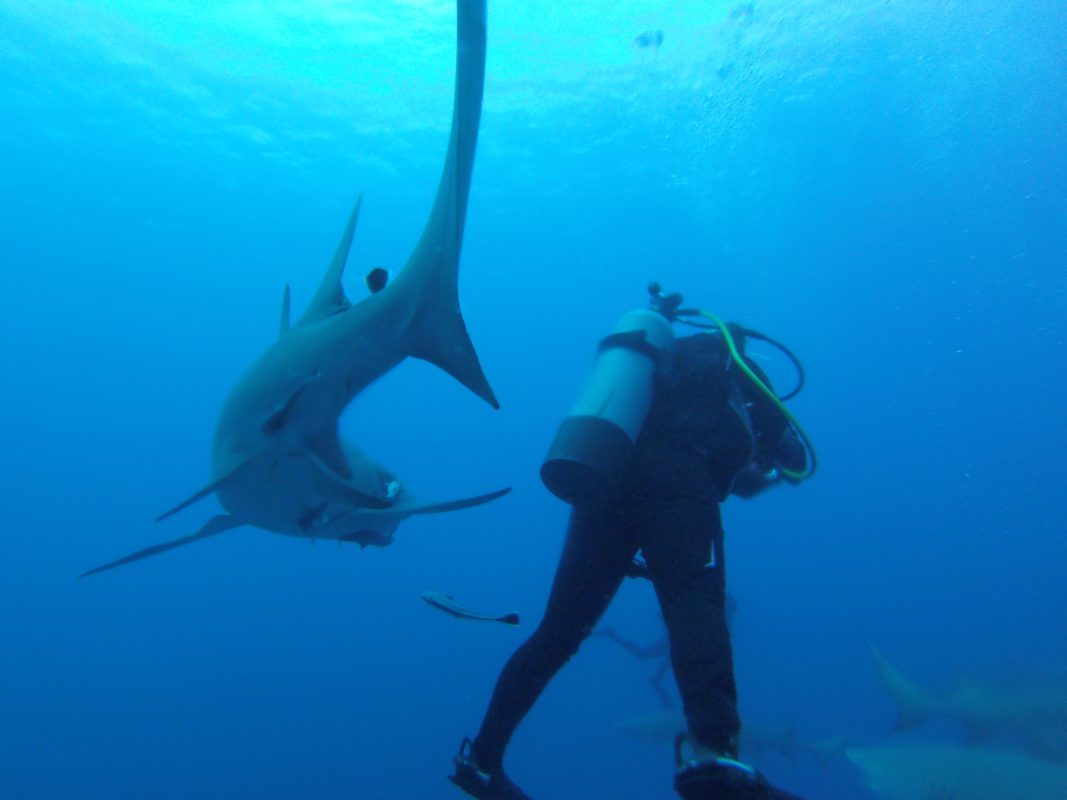







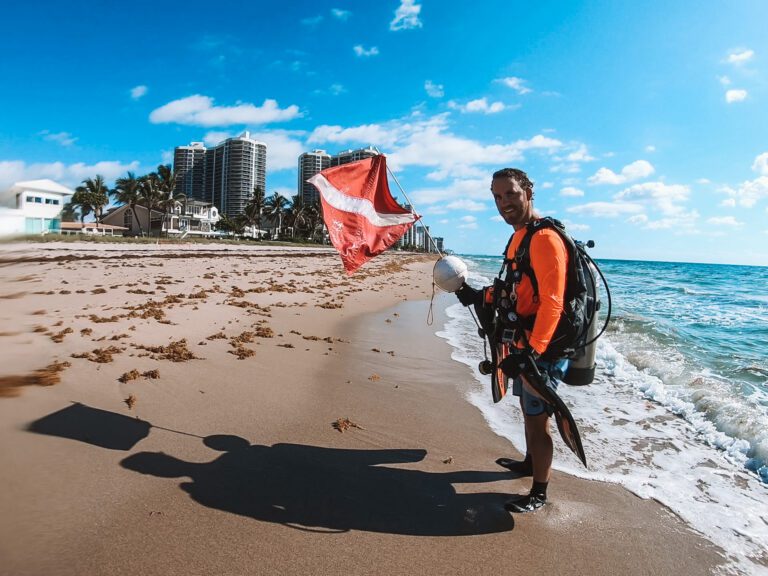
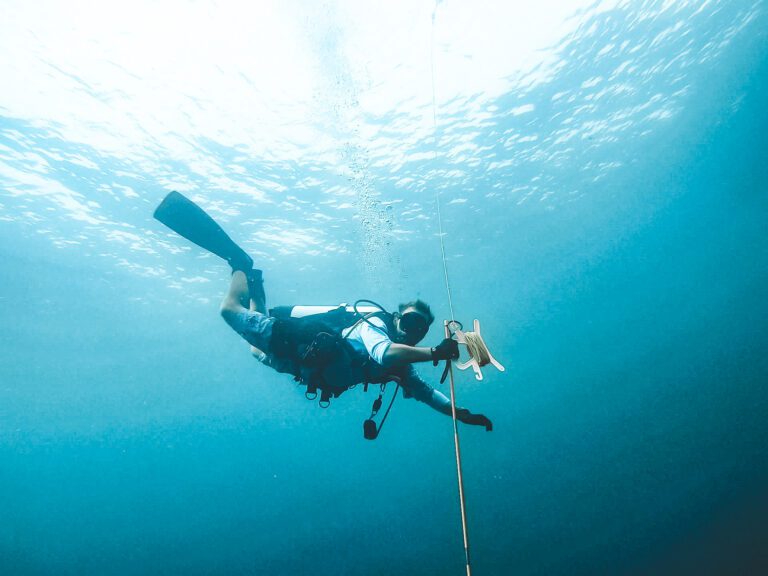
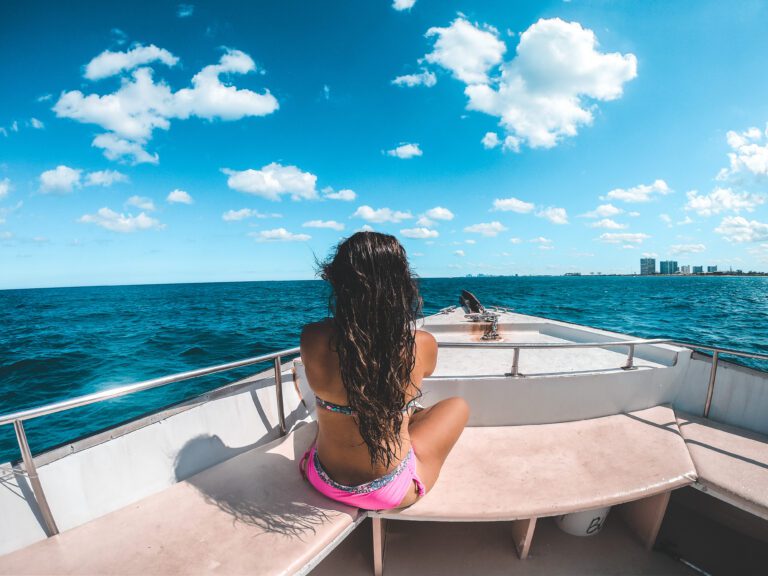
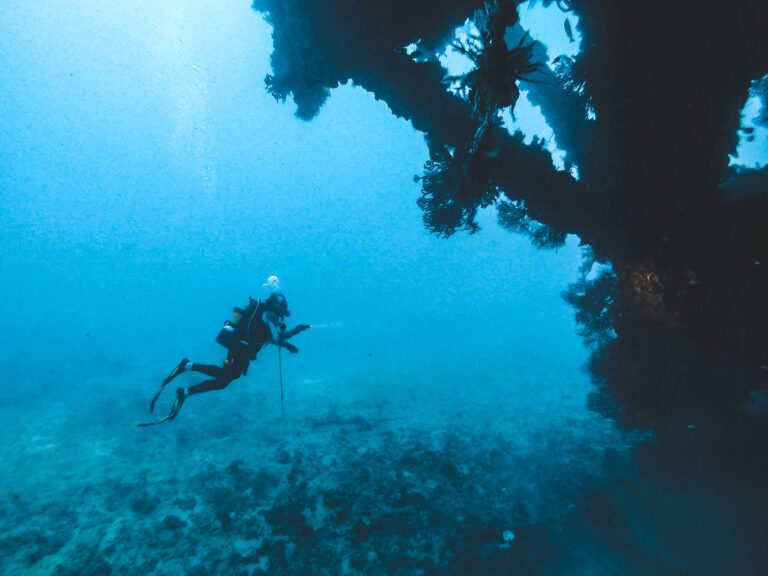
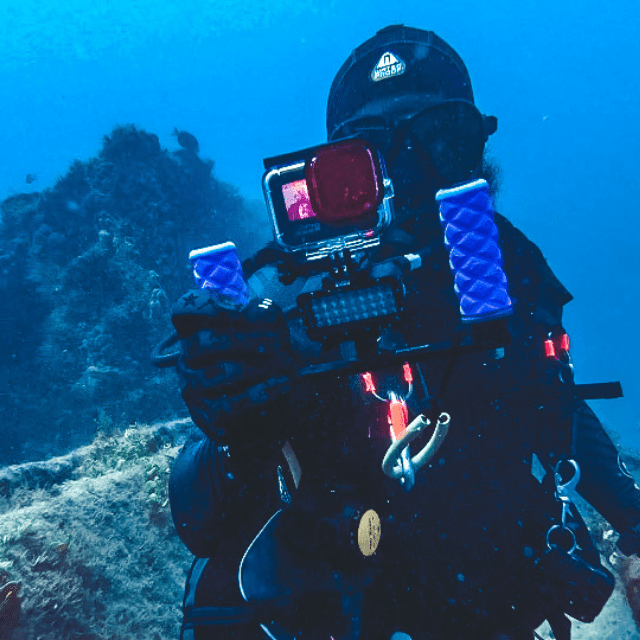
2 Comments